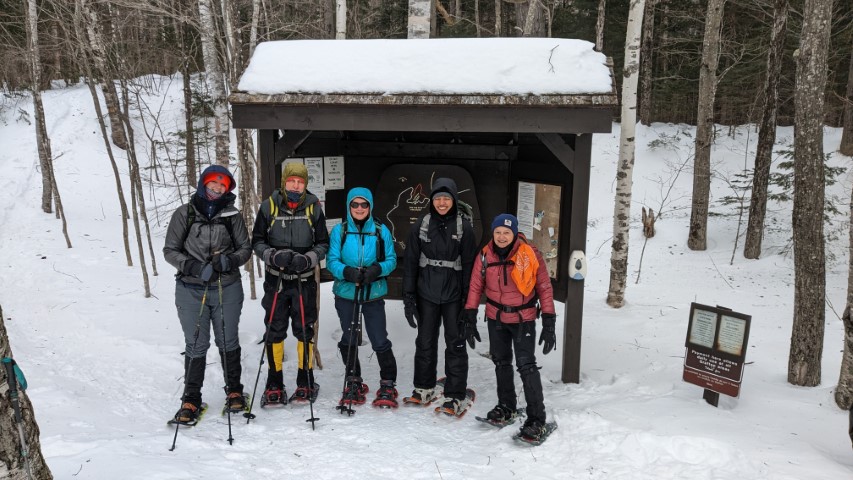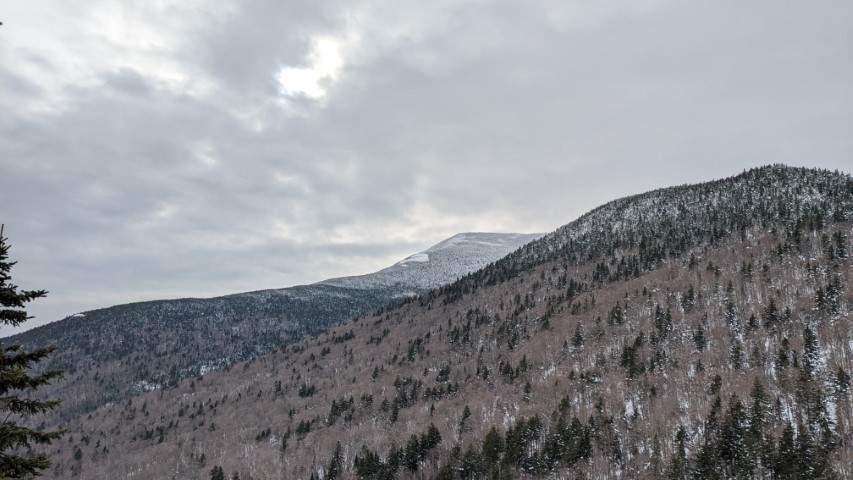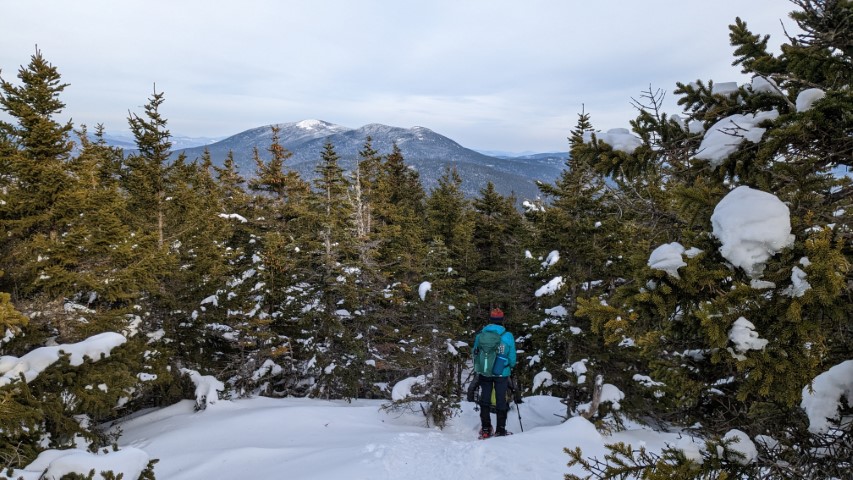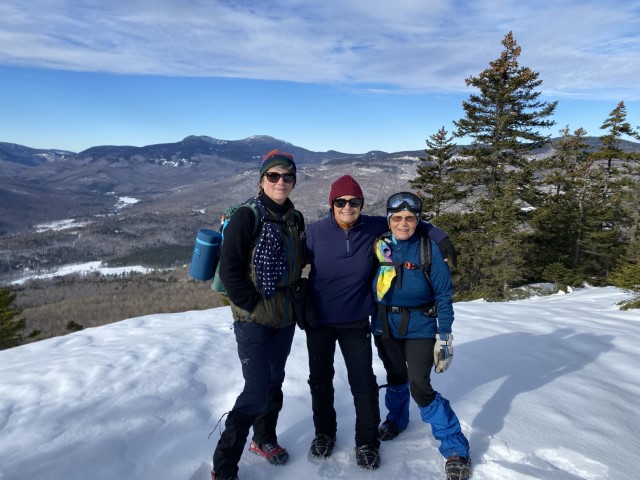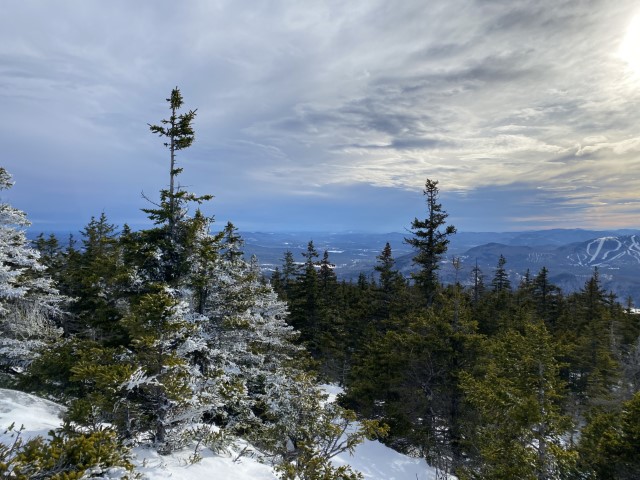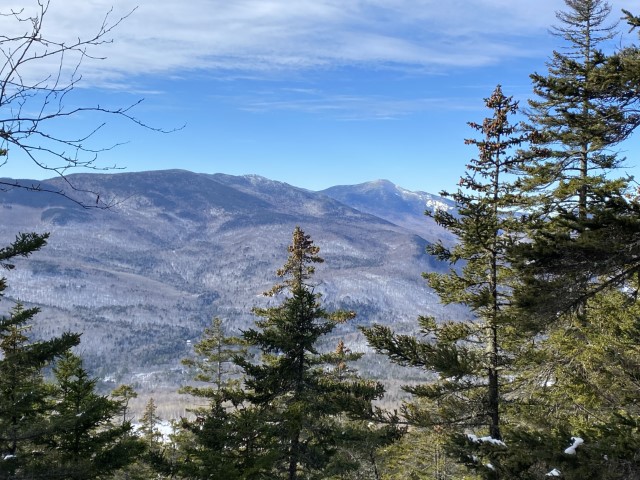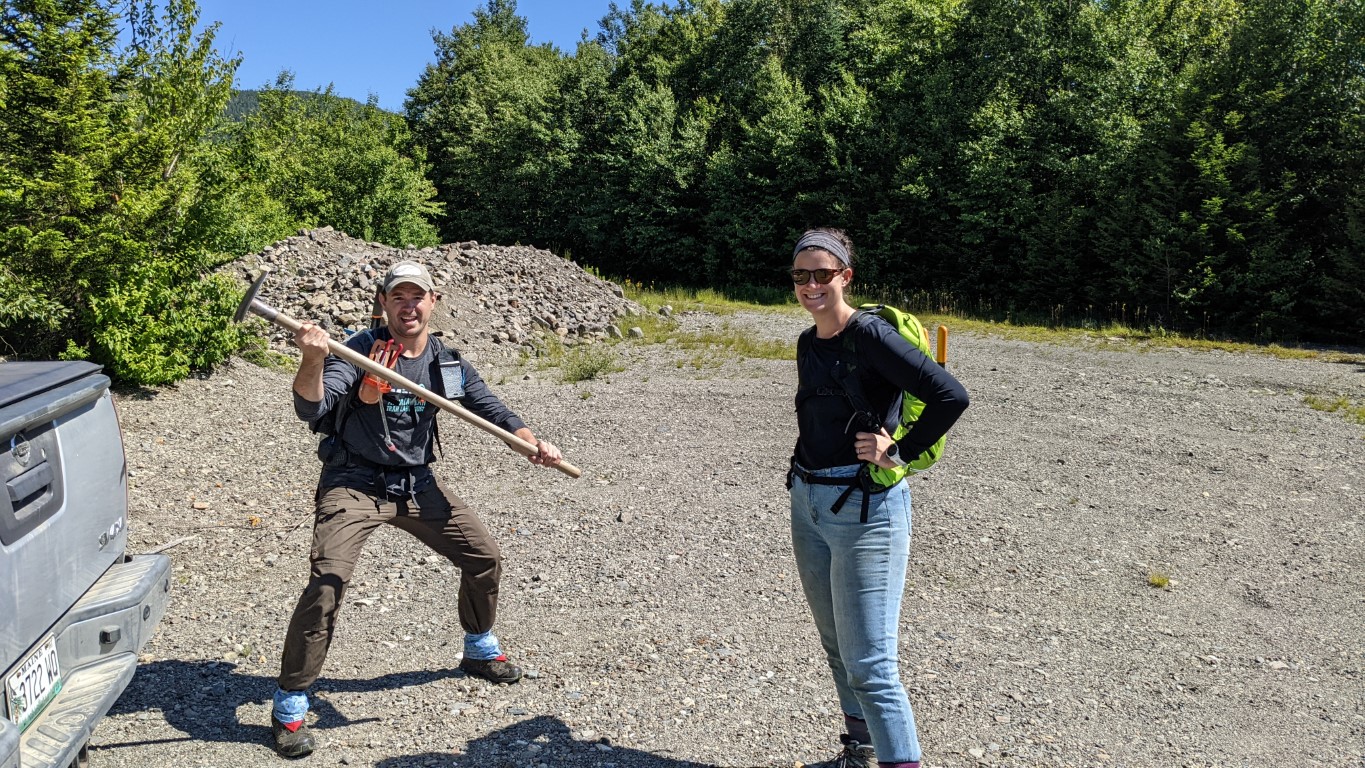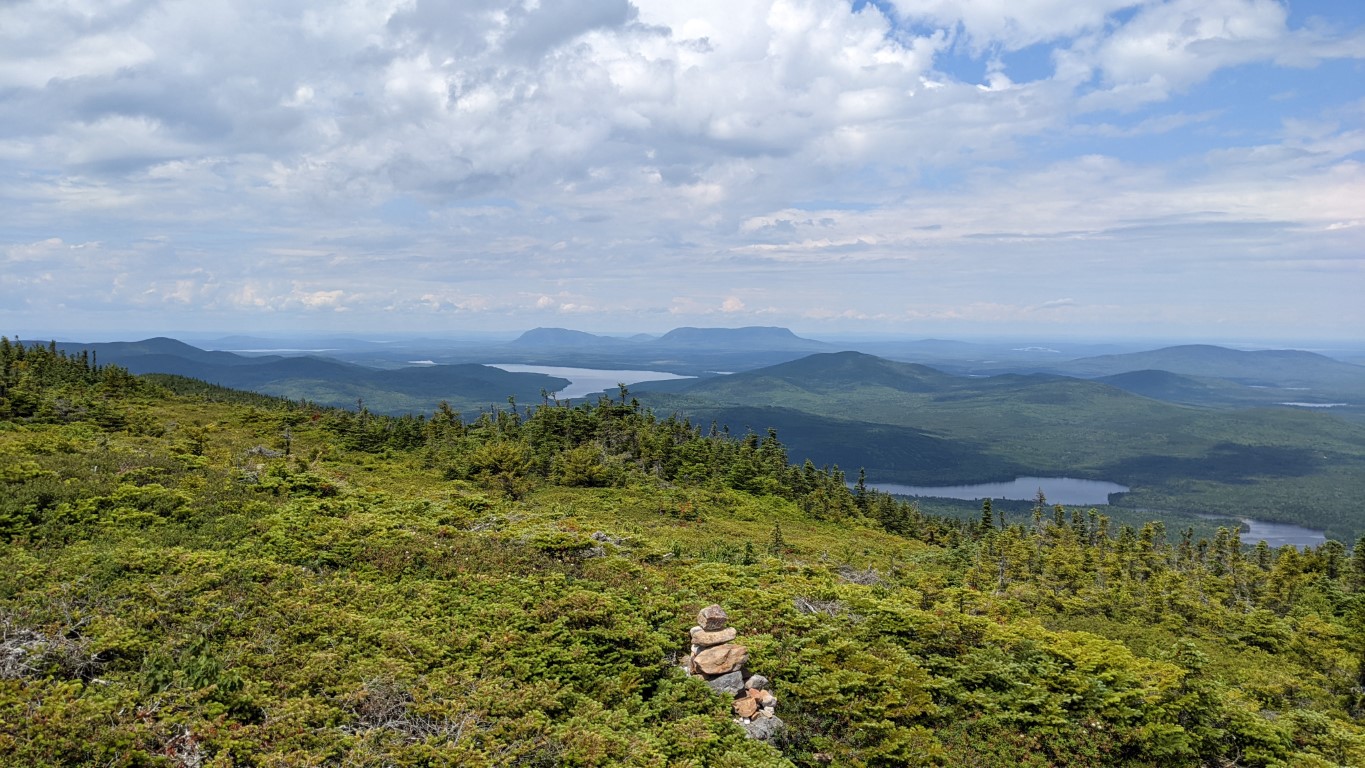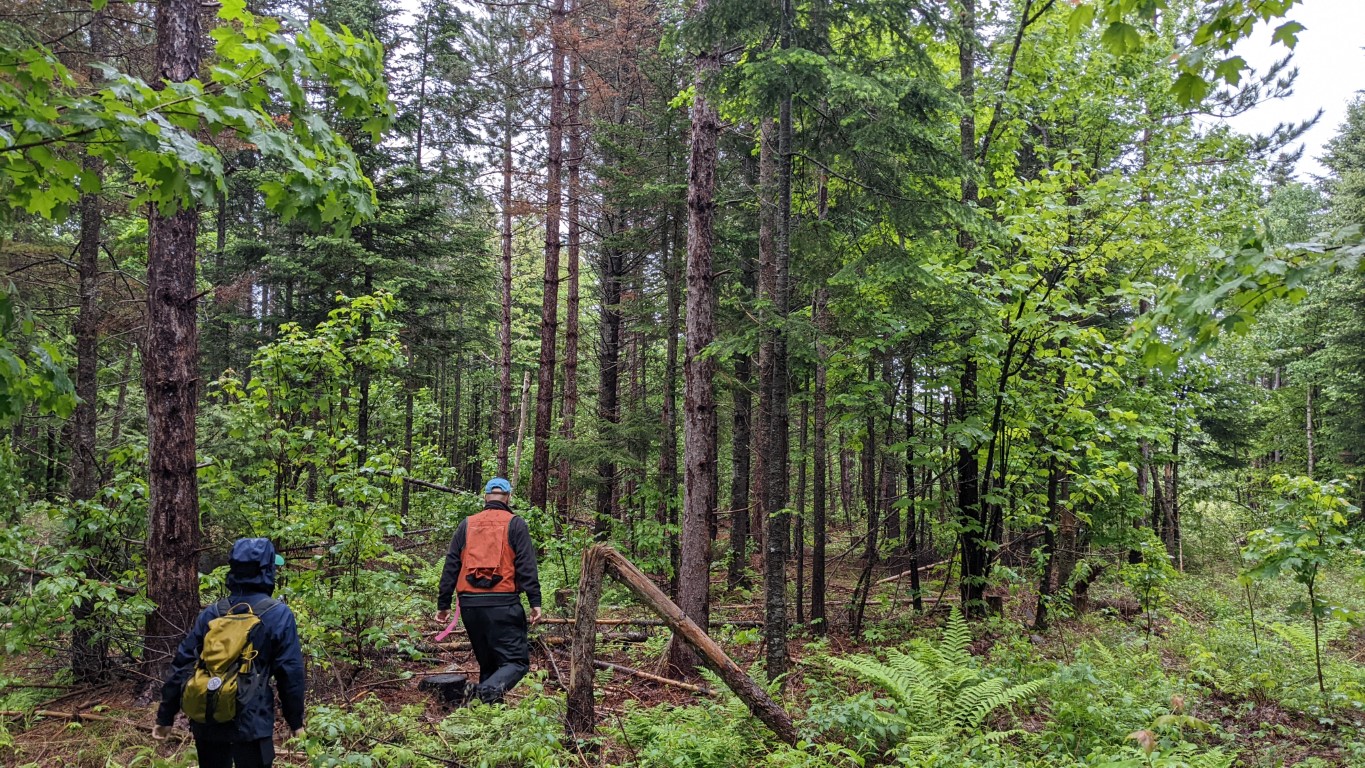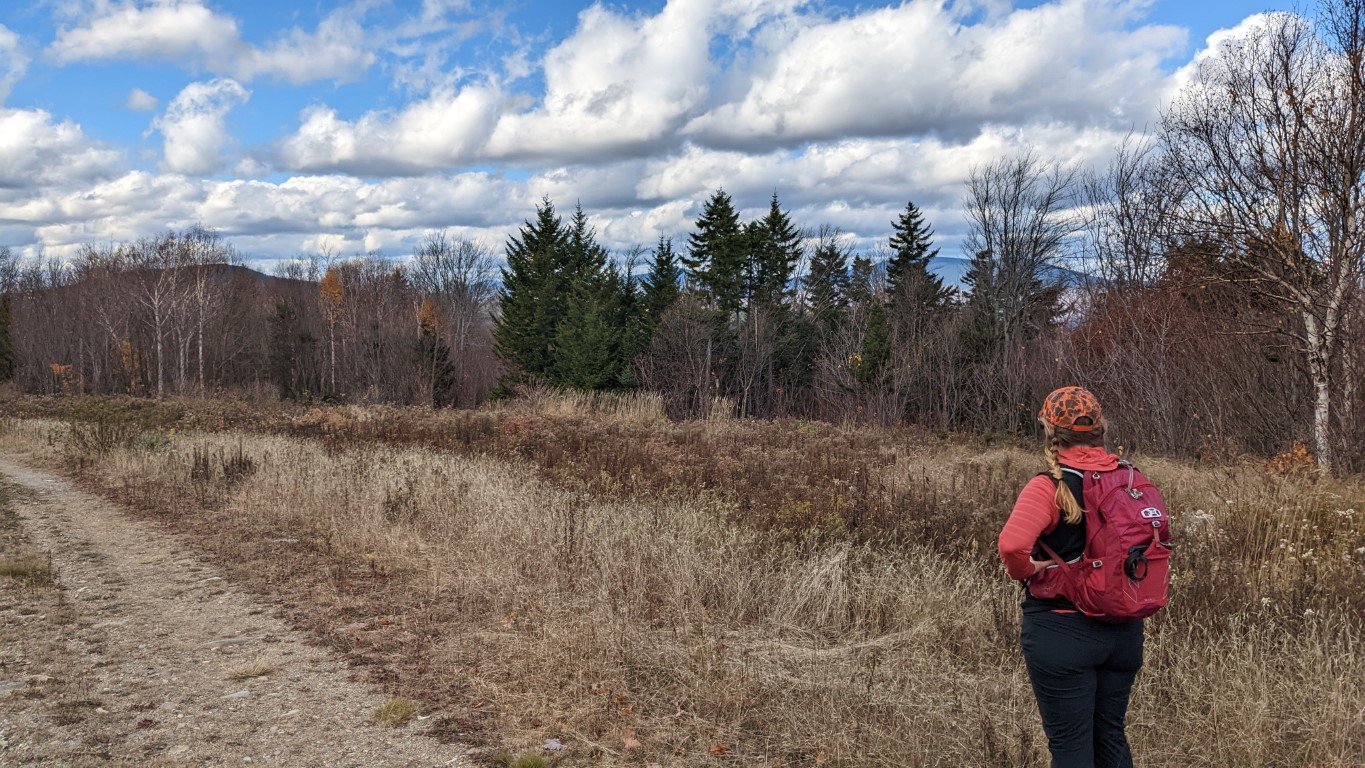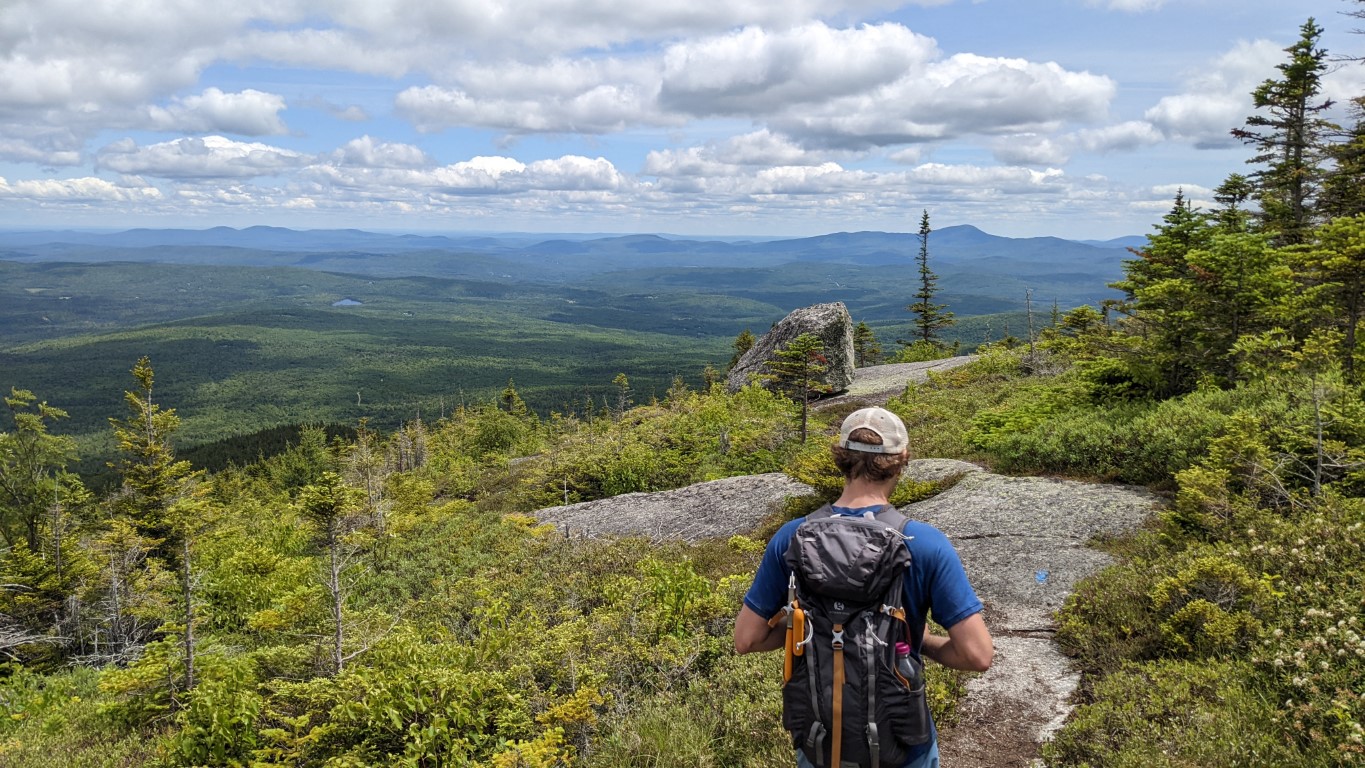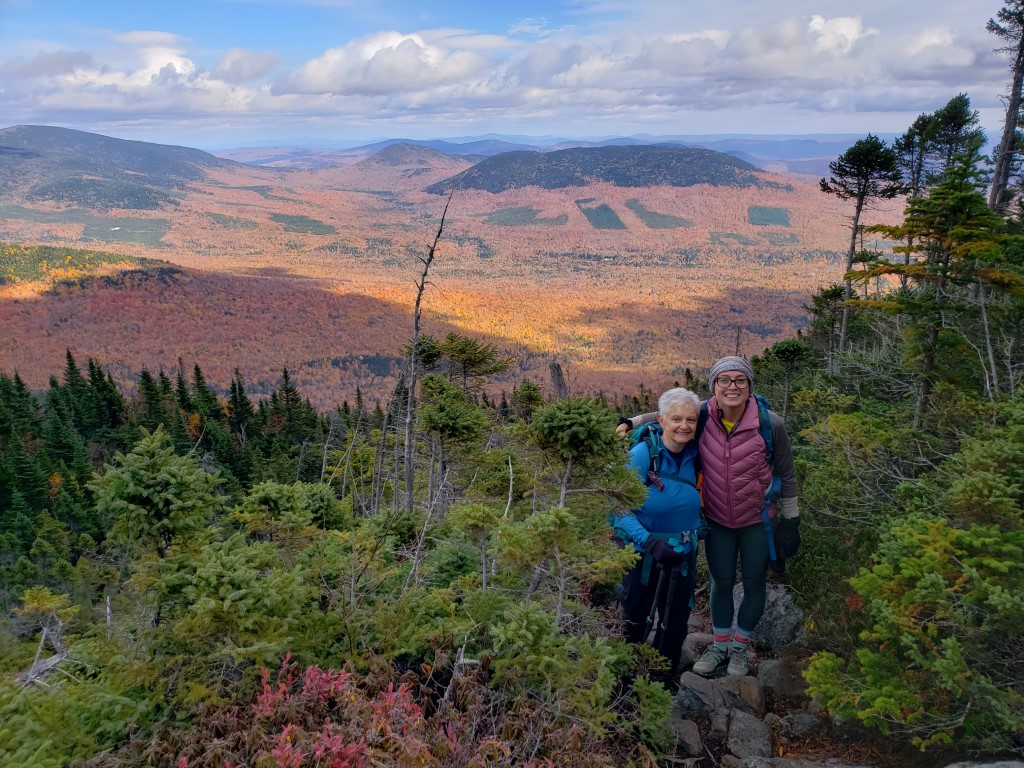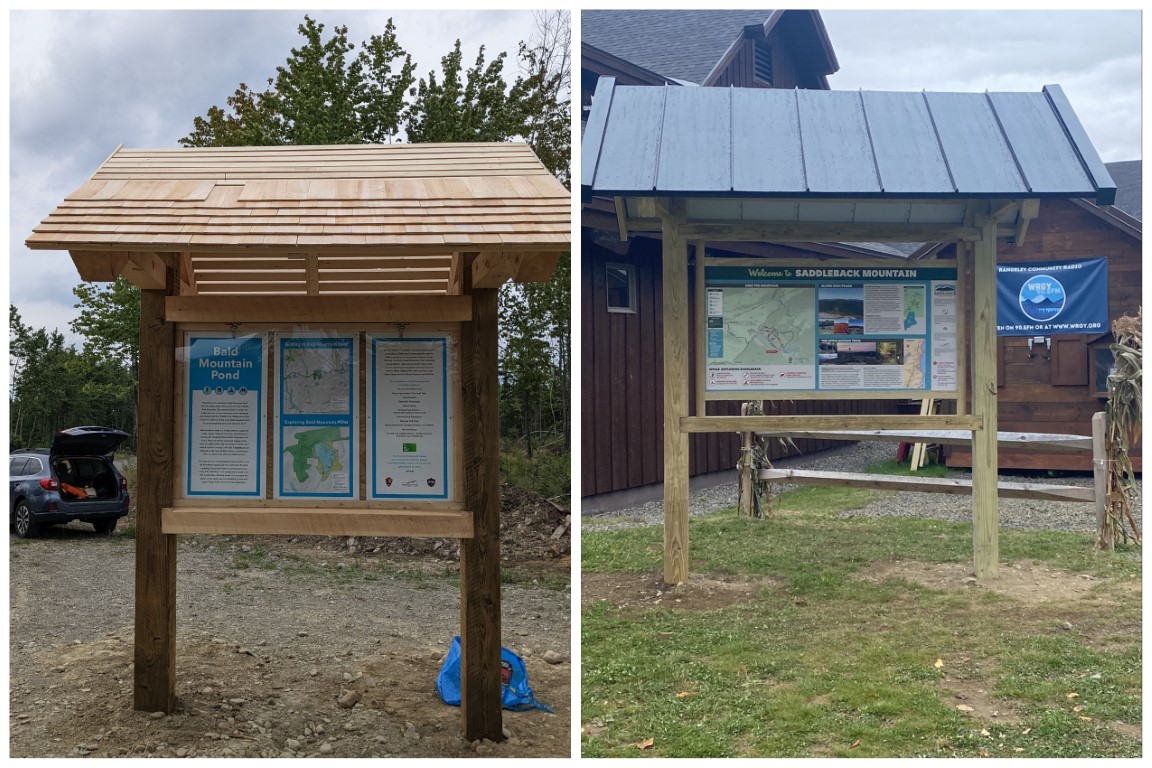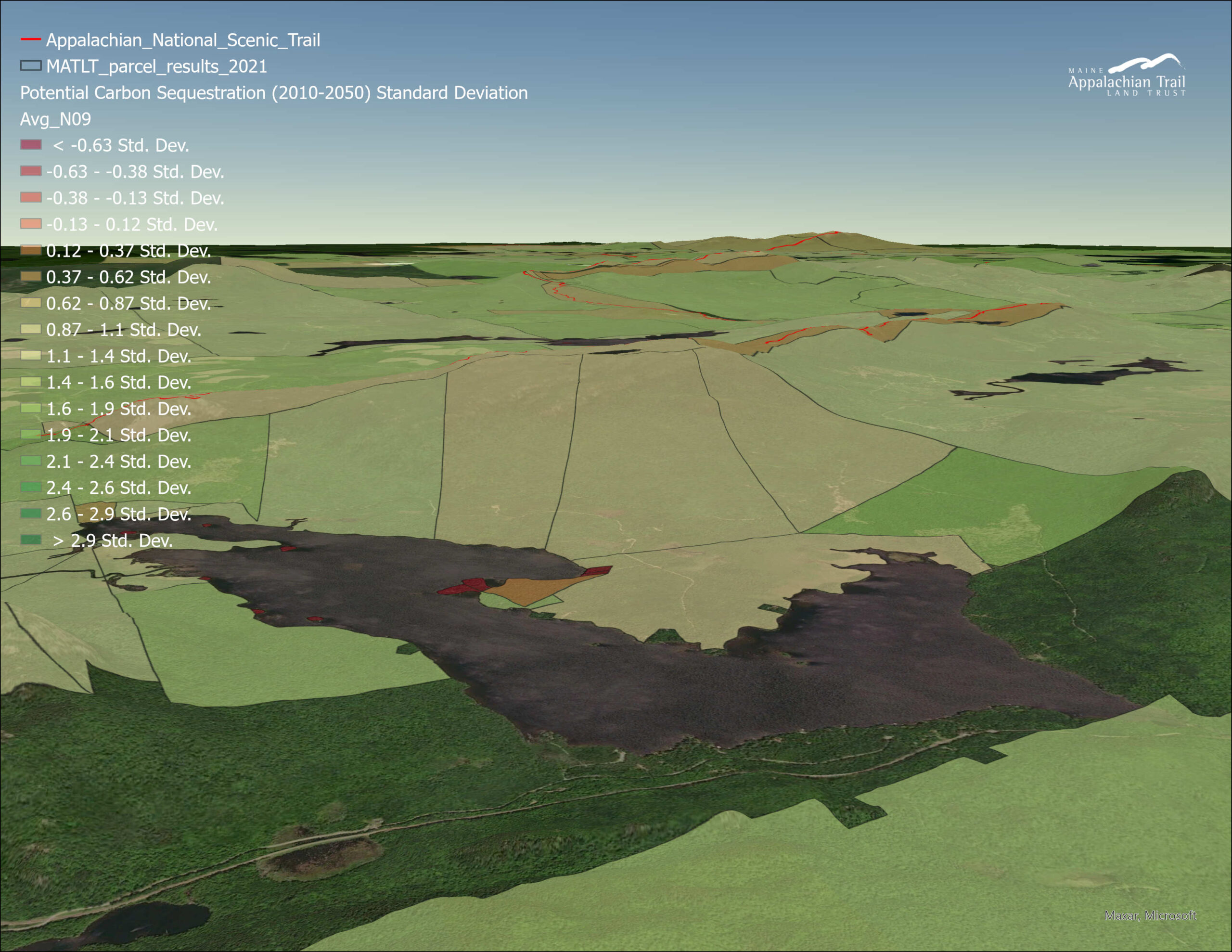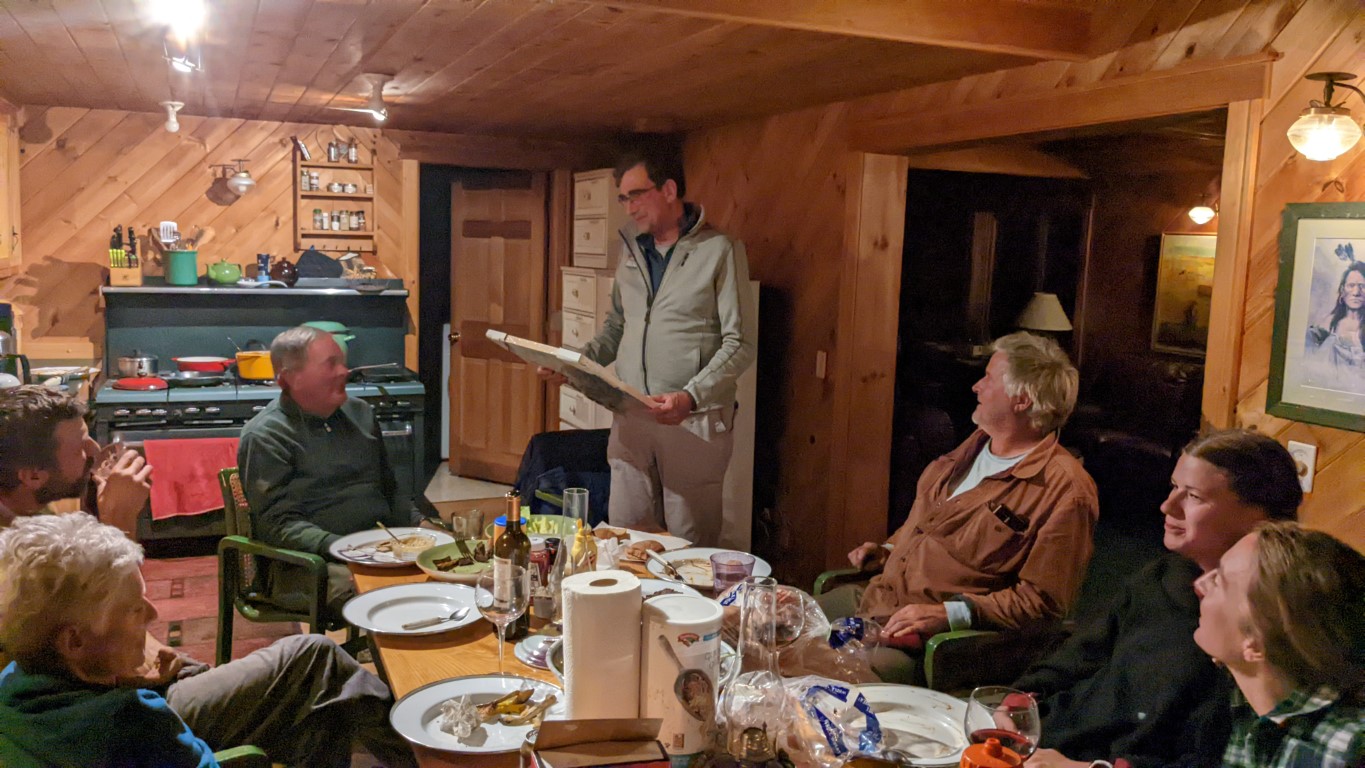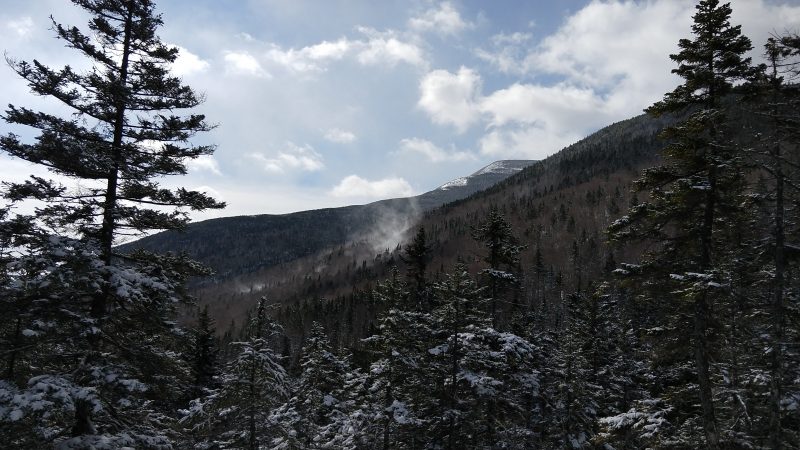Oh Snap! Old Speck hike, postponed until after a record-breaking cold-snap, a success.
Record-breaking low temperatures would not stop a group of six hikers from ascending Old Speck on Sunday, February 5, 2023. In fact, it was the cold snap on Saturday, February 4, the originally scheduled hike day, that convinced trip leaders to reschedule the trip to occur 24-hours later. Four individuals from MATLT and two community guests gathered at the parking lot around 9 am and trekked throughout the slightly-below freezing morning until they summitted the A.T. Old Speck trail just before 2 pm. About halfway through the ascent, the group was very close lands of the South Tract of
the Grafton Forest Wilderness Preserve project. In 2023, MATLT continues to work with the Northeast Wilderness Trust to acquire a forever wild conservation easement to ensure permanent protection of this landscape, though the preserve was not visible through the dense and fluffy snow blanketing the thickly forested mountain.
Snow-shoes were required the entire way up and down the mountain. All had a challenging but happy time – brightened by plenty of amusing bum-sliding on the way down. Most of the trail was slightly packed by perhaps a half-dozen other hikers, but rare moments without snowshoes were met with frequent steps into one-two feet of unpacked snow. Frequent snack
breaks and layer adjustments were warranted due to the length of the hike, which purports to be 7 miles total but was tracked on several smart watches as closer to 9 miles. At the top, hikers posed for some photos, rested briefly,
and opted not to climb the incredibly dangerous and icy fire tower. As the group neared the parking lot, sunset approached but headlamps were not necessary. All were incredibly relieved to step onto solid ground (asphalt) and remove their snowshoes. The two vehicles which carried the hikers departed and all made it home safely that evening. Though tiring, this hike was a success and those who were new to MATLT’s community hikes program appeared interested in continuing to participate.

